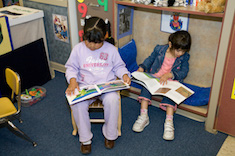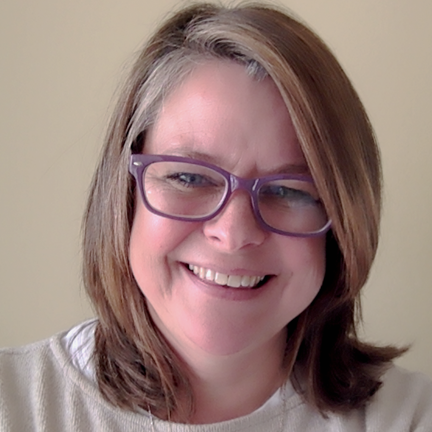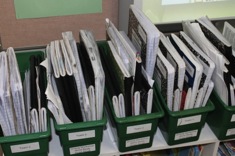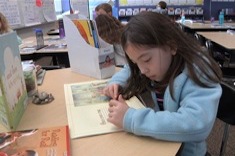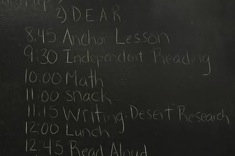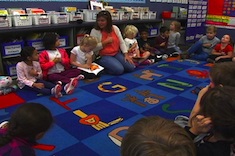I give the group of teachers a big wave and a smile as they quietly slip out of the classroom. Many of them smile and wave back, some mouth Thank you as they leave, some smile at the kids, and others just walk out without a backward glance. I move on to the next part of our day with renewed energy from the attention of these teacher guests but also a nagging uneasy feeling, wondering what their takeaways were and if the experience was as inspirational as their literacy leader who brought them hoped it would be.
I’ve had a steady stream of visitors to my classroom this school year to watch reading workshop in action. These teachers are transitioning to a workshop model and come to observe what it looks like on a day-to-day basis. I’m happy to open my classroom and share what I can, but also worry whether one day in my classroom is enough to show all the work that goes into setting up the routines and expectations for a successful workshop.
After these visits, I often get an email with follow-up questions about what went on that morning. Questions range from the nitty-gritty (Where did I buy my book boxes?) to more in-depth questions (How do I plan for my reading conferences?). This last group of visitors asked about setting up routines and procedures and whether I have a sequence or set of plans for lessons in September. This question provided a good time to pause and reflect.
I spend September (and some of October) building my reading (and classroom) community and setting up our procedures, but I don’t have a set sequence of how it all unfolds. Each class is different—the students bring different kindergarten reading experiences and different personalities—so the classroom dynamic varies a lot from year to year. Instead, I have big ideas that I know need to be in place for our workshop time to be successful. I observe and teach, and teach and observe, to determine what lessons, and how many, need to happen for a particular class. These big ideas are as follows:
Library
Opening my library is a big deal! I want students to know what books are available and how to find them. I also want my library to be treated with care so that the next student can find what he or she is looking for. The day I open my library, I make it a big deal. I walk students through how the library works and then give them time to browse. I may spend the next few days highlighting what is in the library and reviewing book care.
Book shopping is usually bumpy to start and often takes weeks (and weeks!) to fine-tune. As I teach the routine, I shop with the students, supporting their choices and making book suggestions. It can actually be an exhausting time of the week, since they all need a lot of support in this at the start of the year.
Stamina
The amount of time I spend on this varies a lot year to year. Some years this is just a lesson or two, and other years we can work on it for weeks. Either way, I take the time needed to teach, reteach, encourage, book match, praise, and so on to get them to a level of independent reading so that I can begin meeting with students.
I teach the children that we are all readers and there are different ways to engage with texts. We talk about reading the pictures and reading the pictures and the words. These lessons validate everyone’s reading skills and give special attention to looking for details in the illustrations that help tell the story.
Routines
The reading plans and mats routine from the Teachers College has been helpful: My kids first think about their reading plan for the day, rather than just pulling random books from their book box to flip through. I’m also able to walk around the room and quickly see who needs help getting organized for a productive reading time.
We spend a lot of time talking about places to sit in the room for reading. Again, this can be bumpy at the beginning as students learn to make choices to sit around the room where they can be focused and comfortable.
My students are given a book bag (zippered pouch), and each night they take home two or three books to read with their parents. They bring the books back the next day and switch them out. We do this every day of the school year.
I teach the workshop routine cycle of minilesson, independent reading, and reflection circle, and the music (or voice) cues that students need to know to move smoothly between these different parts of our workshop.
Community of Readers
I want students to know each other well and treat each other with respect and care. These lessons are taught through read alouds, modeling, direct instruction, and group work throughout the day (and throughout the year!). I focus on communication skills such as how to share in the reflection circle, read with a partner, and have a conference with me.
These lessons follow a different path/sequence each year. Some years it takes a few days for one of these topics, and other years it may take weeks. But I know that being thoughtful about meeting the needs of the class and taking my time to teach these routines will pay dividends of a productive, thoughtful, and fun reading workshop all year long.

